Abstract
Many Anopheles gambiae were found resting outdoors in an area that had been sprayed with DDT, the numbers being particularly large 4 months after the first annual spraying cycle. A high proportion of the resting females had consumed a blood meal. Window-trap studies showed that a marked exodus from sprayed huts occurred in the morning. It is concluded that the outside resting of An. gambiae is either a natural habit or the result of the irritant action of DDT. This behaviour of the vector is regarded as one of the factors responsible for the marked increase of malaria in the area.
Full text
PDF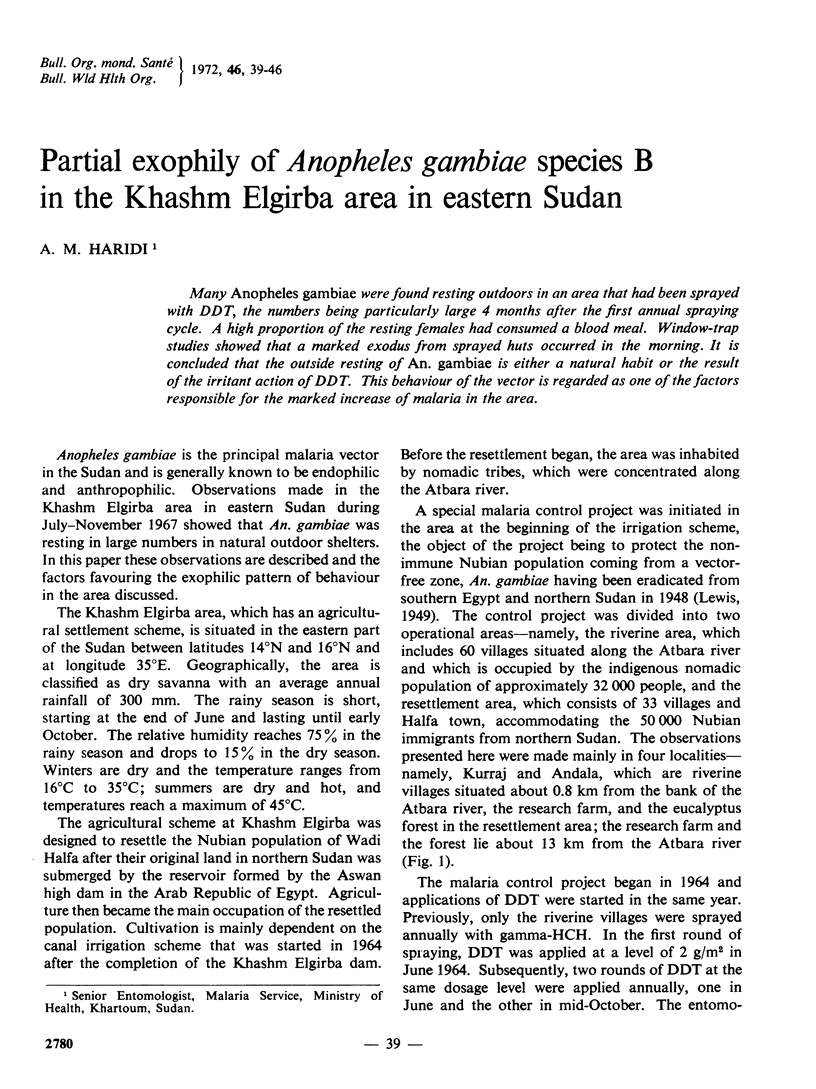
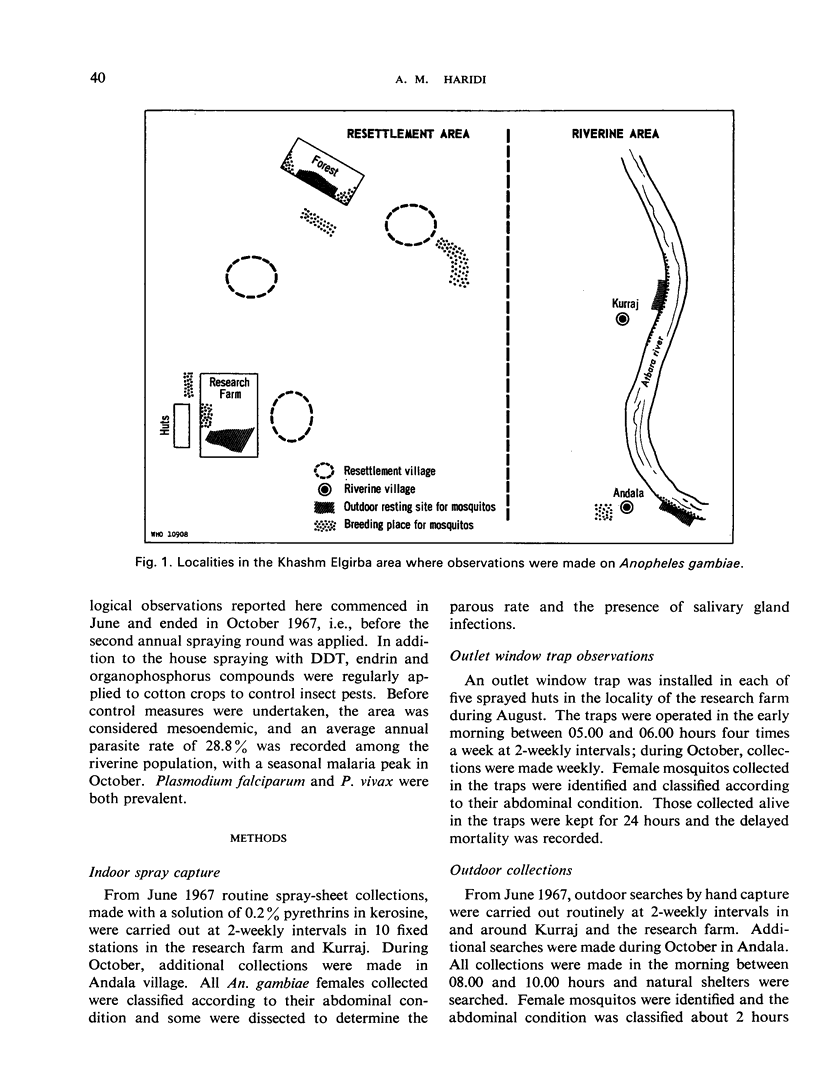
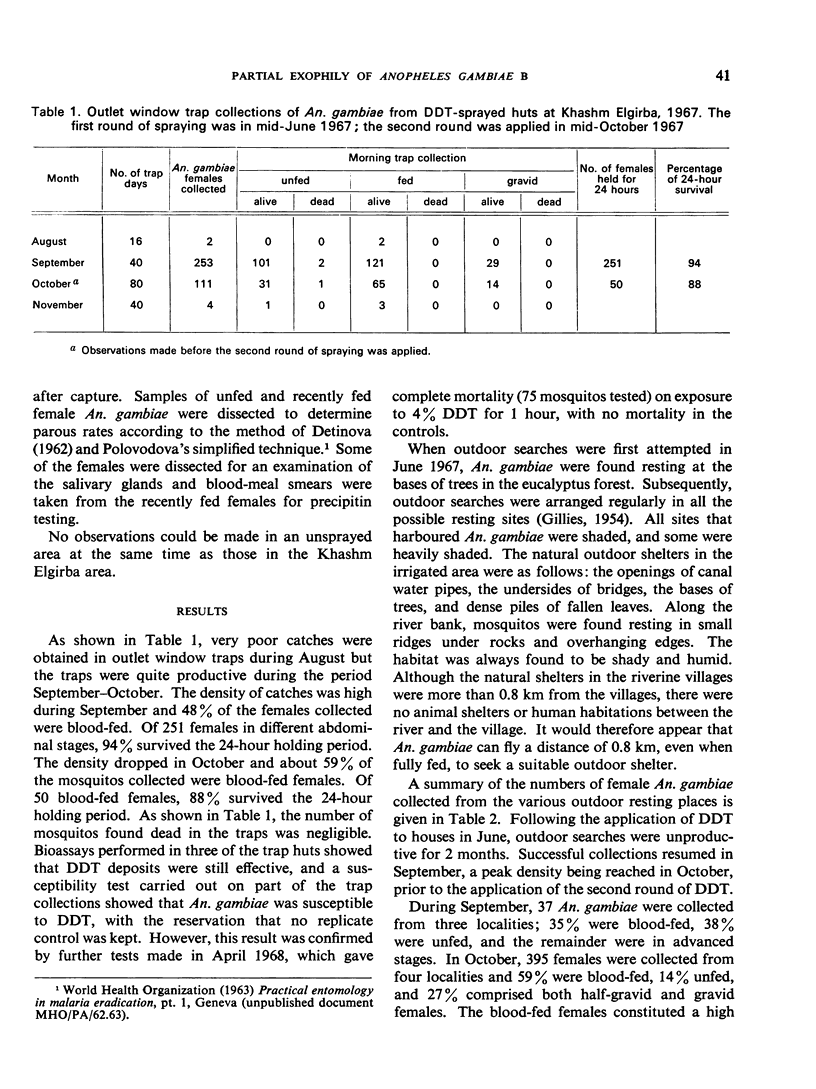
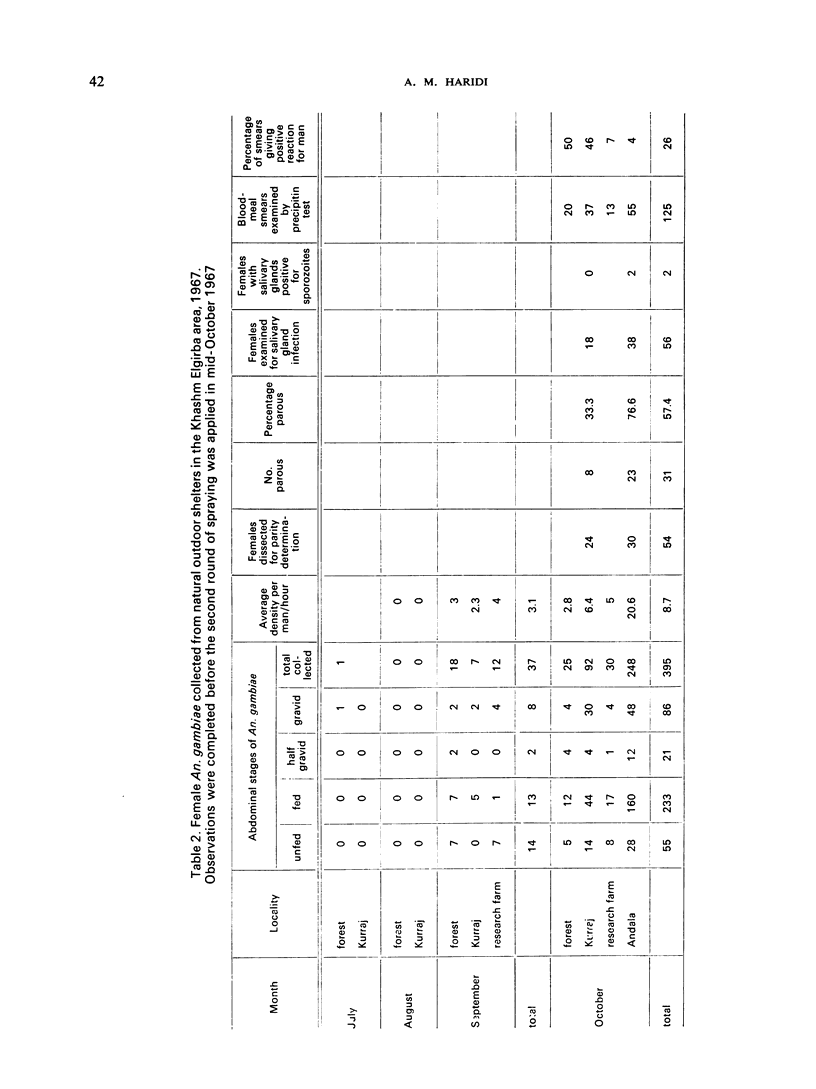
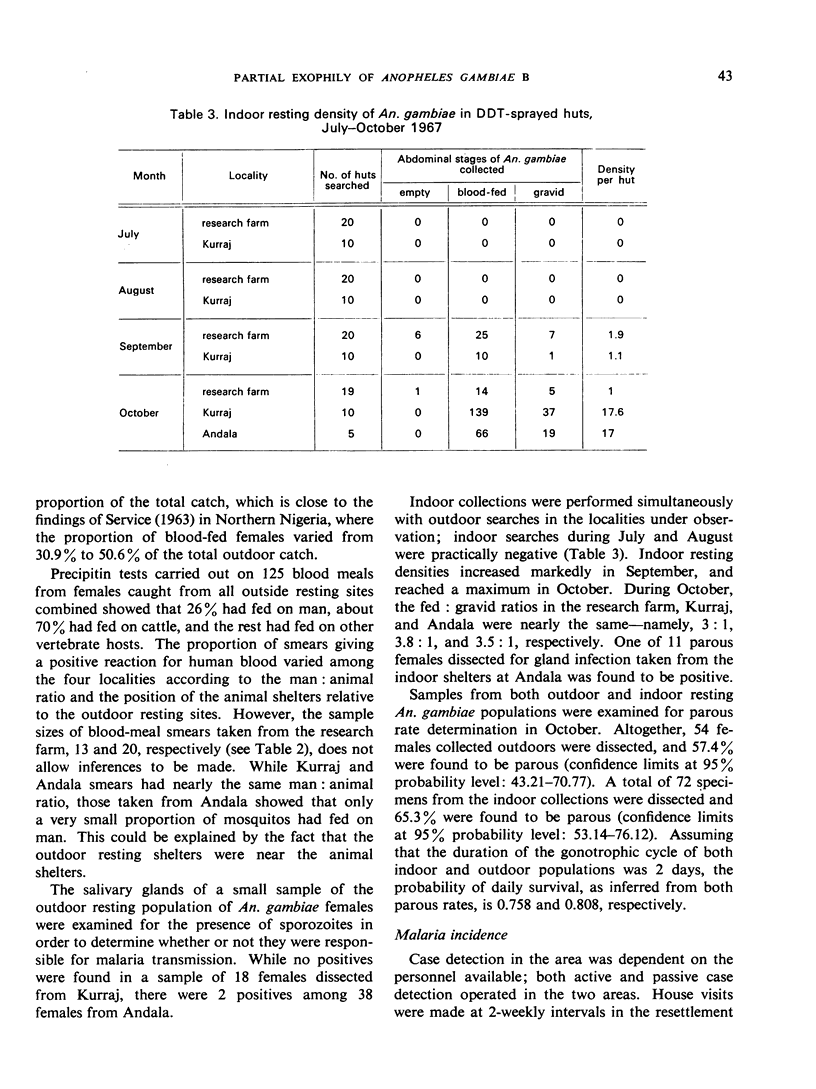

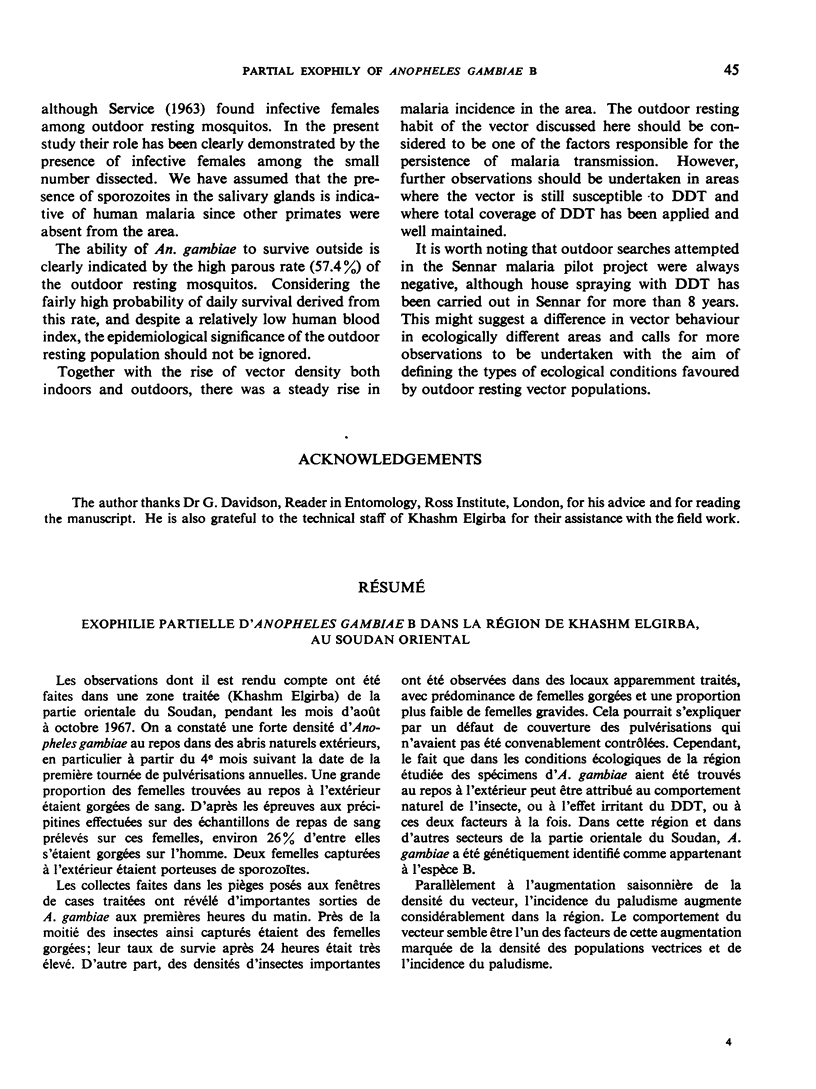
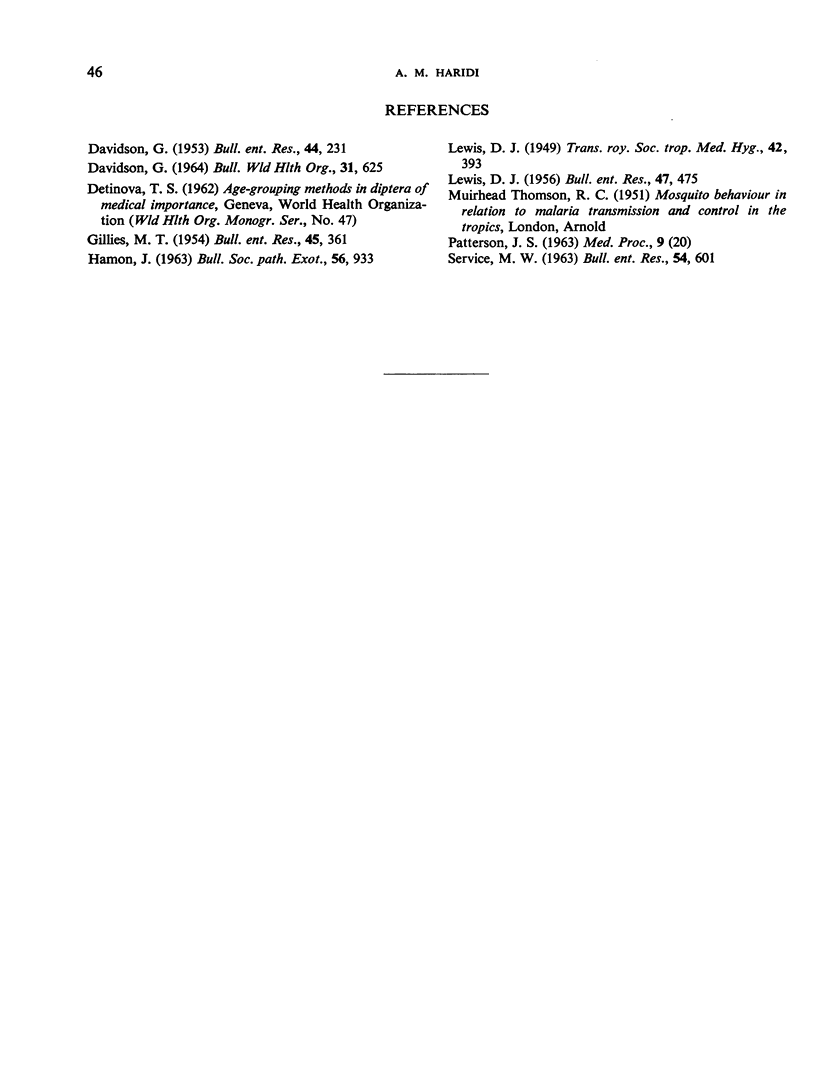
Selected References
These references are in PubMed. This may not be the complete list of references from this article.
- HAMON J., MOUCHET J., CHAUVET G., LUMARET R. BILAN DE QUATORZE ANN'EES DE LUTTE CONTRE LE PALUDISME DANS LES PAYS FRANCOPHONES D'AFRIQUE TROPICALE ET 'A MADAGASCAR. CONSID'ERATIONS SUR LA PERSISTANCE DE LA TRANSMISSION ET PERSPECTIVES D'AVENIR. Bull Soc Pathol Exot Filiales. 1963 Sep-Oct;56:933–971. [PubMed] [Google Scholar]
- LEWIS D. J. The extermination of Anopheles gambiae in the Wadi Halfa area. Trans R Soc Trop Med Hyg. 1949 Jan;42(4):393–402. doi: 10.1016/0035-9203(49)90086-3. [DOI] [PubMed] [Google Scholar]


